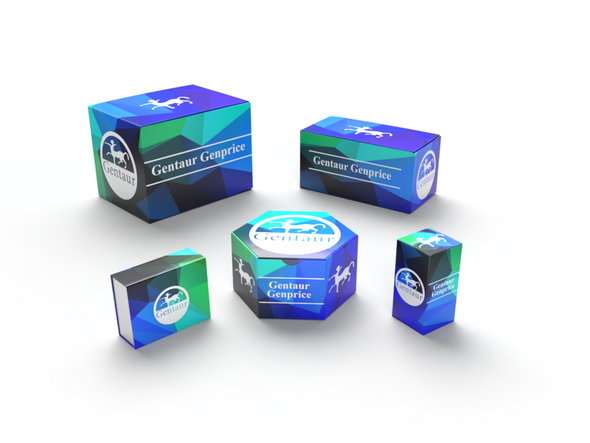Description
KLHL1 Antibody | 3015 | Gentaur UK, US & Europe Distribution
Host: Rabbit
Reactivity: Human, Rat
Homology: Predicted species reactivity based on immunogen sequence: Mouse: (100%)
Immunogen: KLHL1 antibody was raised against a 14 amino acid synthetic peptide from near the amino-terminus of human KLHL1.
The immunogen is located within the first 50 amino acids of KLHL1.
Research Area: Neuroscience
Tested Application: E, WB, IHC-P
Application: KLHL1 antibody can be used for the detection of KLHL1 by Western blot at 2 - 4 μg/mL. Antibody can also be used for immunohistochemistry starting at 10 μg/mL.
Antibody validated: Western Blot in human samples and Immunohistochemistry in rat samples. All other applications and species not yet tested.
Specificiy: N/A
Positive Control 1: Cat. No. 1201 - HeLa Cell Lysate
Positive Control 2: Cat. No. 1403 - Mouse Brain Tissue Lysate
Positive Control 3: N/A
Positive Control 4: N/A
Positive Control 5: N/A
Positive Control 6: N/A
Molecular Weight: Predicted: 82 kDa
Observed: 82 kDa
Validation: N/A
Isoform: N/A
Purification: KLHL1 Antibody is immunoaffinity purified .
Clonality: Polyclonal
Clone: N/A
Isotype: IgG
Conjugate: Unconjugated
Physical State: Liquid
Buffer: KLHL1 Antibody is supplied in PBS containing 0.02% sodium azide.
Concentration: 1 mg/mL
Storage Condition: KLHL1 antibody can be stored at 4˚C for three months and -20˚C, stable for up to one year. As with all antibodies care should be taken to avoid repeated freeze thaw cycles. Antibodies should not be exposed to prolonged high temperatures.
Alternate Name: KLHL1 Antibody: MRP2, KIAA1490, Kelch-like protein 1
User Note: Optimal dilutions for each application to be determined by the researcher.
BACKGROUND: KLHL1 Antibody: The mammalian Kelch-like 1 (KLHL1) was initially discovered as a homolog to the Drosophila Kelch gene that is highly expressed in several brain tissues. The predicted protein domain structure of KLHL1 is characteristic of a number of proteins that bind actin, form dimers, and often act as actin-organizing proteins. Based on the presence of anti-sense RNA that spans the transcription and translation start sites as well as the first splice site of KLHL1 in brain tissue of individuals suffering from the neurodegenerative disorder spinocerebellar ataxia type 8 (SCA8) , it has been suggested that KLHL1 is involved this disease and that regulation of KLHL1 protein may be affected by antisense RNA expression.






